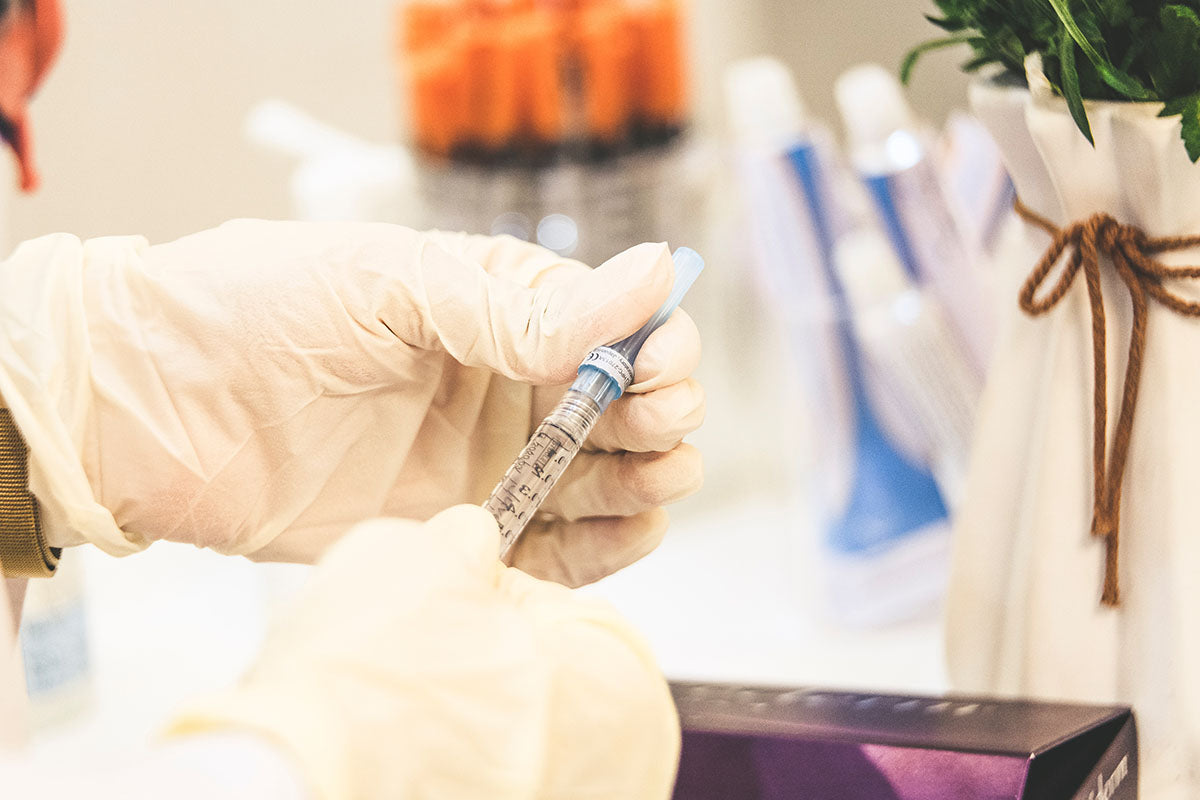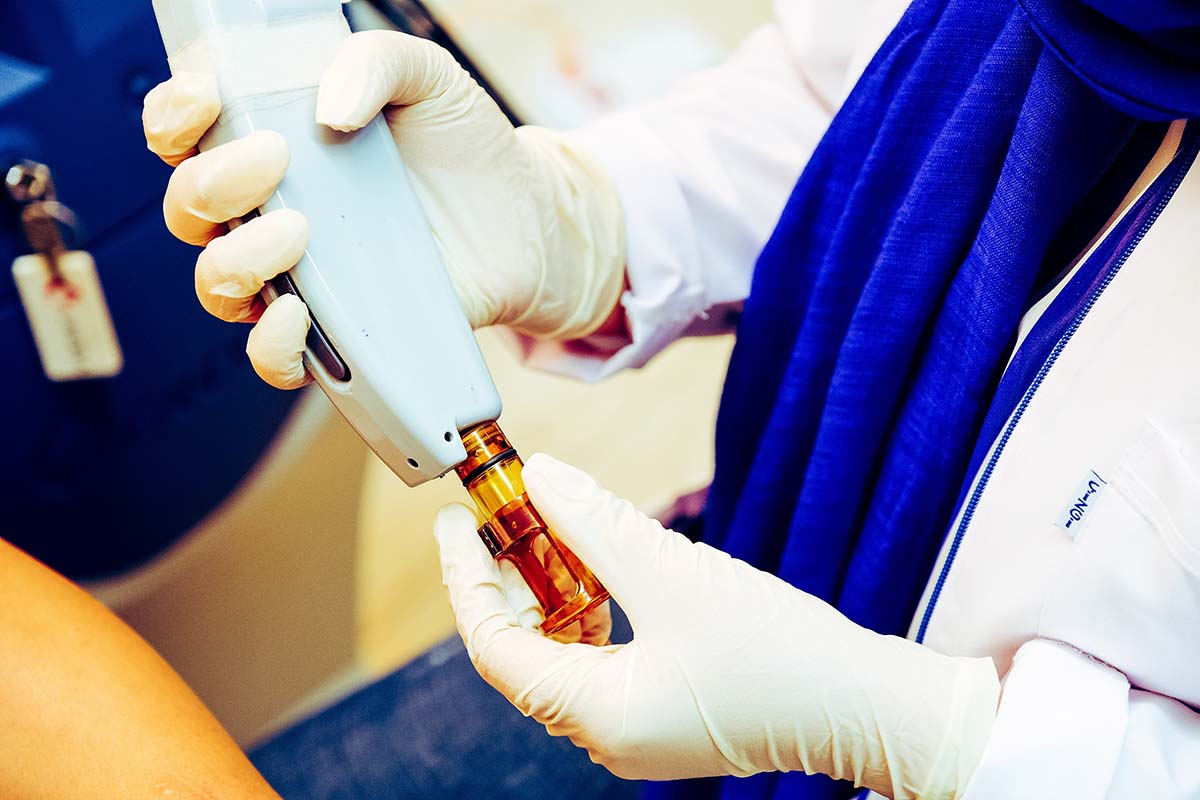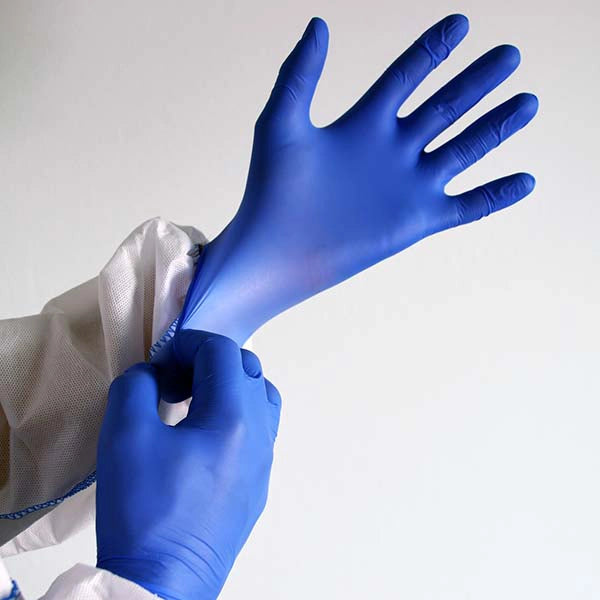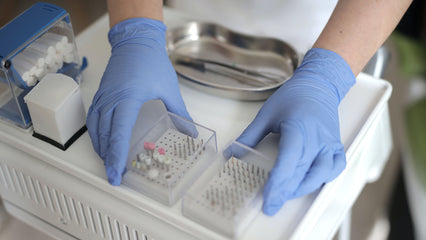Gloves made of natural rubber latex have many excellent qualities that make them useful for preventing mess, infection, and contamination. But if you have a latex allergy, they can cause irritation or even harm. No one wants to worry that the hand protection they're using might make them sick.
Our detailed latex allergy guide will review what causes latex allergies, how to spot symptoms of a latex allergic reaction, and how you can stay safe. We'll also explain how working professionals can choose the best substitutes for latex gloves. Using the right disposable gloves can be crucial for preventing allergic reactions to latex.
At a glance:
What Is a Latex Allergy?
Having a latex allergy means that your immune system is hypersensitive to one or more of the ingredients of natural rubber latex. Though it's heavily processed, latex rubber is made from tree sap, and it contains huge numbers of plant proteins. Hundreds of these latex proteins are known allergens that can trigger an immune response in sensitive individuals.
For people with latex allergies, any exposure to latex may cause a negative reaction ranging from an uncomfortable rash to a life-threatening case of anaphylaxis. This can be especially concerning for healthcare workers since many medical or health-related products like respirators, stethoscopes, and IV tubes commonly contain latex.
Anyone who uses disposable gloves frequently on the job should also be aware of potential allergy risks. Single-use gloves are often made of latex because they're quite stretchy and form-fitting. Latex gloves allow for a good range of movement and touch sensitivity, and they're usually quite durable for their thickness. Sadly, their frequent use can lead to allergic reactions.
What Causes a Latex Glove Allergy?

In many cases, latex allergies are at least partly caused by genetics. Some individuals may simply have an inherited sensitivity to the natural proteins in latex. The first time they come in contact with natural rubber, their symptoms will flare up.
You can also acquire a latex allergy through repeated exposure to latex. As a result, people who often use rubber products in their daily routines can be at a higher risk of developing latex allergy symptoms. This is common in professions like:
- Doctors, nurses, and other medical practitioners
- Hair and beauty specialists
- Tattoo artists
- Law enforcement professionals
- Painters
- Plumbers
- Janitorial workers
How Common Are Latex Allergies?
Researchers have estimated that latex allergies affect about 1-2% of the general population but up to 7.6% of healthcare workers. People with chronic medical conditions who are often in the hospital may be at even higher risk. For instance, according to the National Institutes of Health, as many as 65% of people with spina bifida may have a sensitivity to latex.
Foods Related to Latex

The same proteins found in rubber tree sap can be found in some fruits, vegetables, and nuts. People with latex allergies may also experience a reaction to these foods, causing “latex-fruit syndrome” or “latex-food allergy syndrome”. Watch out for foods like:
- Avocado
- Banana
- Chestnut
- Kiwi
- Apple
- Carrot
- Celery
- Papaya
- Potatoes
- Tomatoes
- Melons
Latex Allergy Symptoms and Types

Allergic reactions to gloves fall into a few distinct categories:
Type I Hypersensitivity
This kind of reaction happens when someone with a latex allergy comes in contact with latex proteins — for example, by wearing latex gloves. A type of antibody called immunoglobulin E (IgE) latches on to these proteins, causing a rapid response from the body's immune system.
A Type I reaction to latex occurs almost immediately after contact and can be quite serious. It may cause any of the following latex allergy symptoms:
- Raised, itchy blisters or bumps (AKA hives)
- Sore throat
- Sneezing
- An itchy or runny nose
- Itchy, watery, or puffy eyes
- Headaches
- Cramps
- Elevated heart rate
- Weakened pulse
- Drop in blood pressure
- Dizziness
- Nausea, vomiting, or diarrhea
- Swelling of the face, throat, and tongue
- Difficulty breathing, including wheezing and chest tightness
Some of these symptoms of latex allergy can put your life at risk. The ones listed in bold can be signs of anaphylaxis, a dangerous allergic reaction.
Contact Dermatitis (Type IV Hypersensitivity)
Contact dermatitis may result from a latex allergy or from a sensitivity to the chemical additives used in the manufacturing process. It can also be due to simple skin irritation.
In either case, the symptoms don't usually show up right away. They can appear as much as four days after you use latex gloves, though 12-48 hours is a more common timeline.
Irritant contact dermatitis typically results in dry, itchy, cracked, and flaky skin. It's usually limited to the spots where your gloves touched your hands.
Allergic contact dermatitis can be more widespread, causing itchy hives or red, swollen skin even in places your gloves didn't touch. However, it doesn't include the severe systemic effects of anaphylaxis.
A Type IV reaction to latex is usually much less serious than a Type I reaction. That doesn't mean you should ignore it, though. Continuing to use latex gloves could put you at risk of developing a more severe latex allergy over time.
Contact Urticaria
Though it looks similar to contact dermatitis, this type of reaction to latex gloves is usually not caused by an actual allergy. Instead, urticaria usually results from wearing rubber gloves for too long without changing them. The buildup of heat and sweat, along with the friction of the gloves against your hands, can cause a rash.
Urticaria typically results in itchy, tingly, or painful hives. Unlike contact dermatitis, urticaria usually appears while you're still wearing your gloves and goes away within 24 hours of taking them off. It can be uncomfortable but usually isn't dangerous.
How Is A Latex Allergy Diagnosed?

Your doctor will usually diagnose a latex allergy by asking you some questions about your symptoms and medical history, as well as performing some tests to see how your immune system reacts to latex proteins. A skin test is considered the most accurate method. This involves placing latex allergens on a small patch of skin or gently pricking you with an allergen-tipped needle. If the test site becomes swollen and inflamed, this almost always means you’re allergic.
The standard materials used for latex allergy skin testing are not widely available in the United States. Patients in the U.S. are more likely to be diagnosed with laboratory tests in which their bodily fluids are examined for latex antibodies.
How Is a Latex Allergy Treated?
There is no known way to permanently cure a latex allergy. Treatment options are generally limited to managing the symptoms of a reaction.
A Type I allergic reaction to latex gloves may require immediate medical attention. If you or someone around you shows any signs of anaphylaxis, you should contact emergency services right away.
An injection of epinephrine (such as an EpiPen), if it's available, can be an important latex glove allergy treatment. It can slow down the allergic reaction, giving you (or the person affected) time to reach an emergency room.
For a less severe latex glove allergy on hands or arms, you should remove your gloves and wash the affected area with soap and water. This can help with things like urticaria or dermatitis. You may also be able to soothe mild latex allergy symptoms with over-the-counter medications like:
- Hydrocortisone cream (good for rashes from a latex glove allergy on hands)
- Calamine lotion (also helpful for rashes)
- Antihistamines (useful for "hay fever" symptoms like runny nose or itchy eyes)
Preventing Latex Allergy Reactions in the Workplace

Since there's no surefire latex allergy treatment, the best approach is to avoid any exposure to latex — not just for yourself, but for any allergic employees, colleagues, customers, or patients.
Choosing alternatives to latex gloves, like nitrile or vinyl gloves, is one simple way to do this. However, if you don't have a latex allergy and you like the fit and feel of latex, you should at least use powder-free latex gloves. Glove powder can carry latex proteins when it falls off, potentially causing severe allergic reactions if it's inhaled. The FDA has banned powdered medical gloves for this reason.
You should also make sure to change gloves regularly, washing your hands with soap and water in between. This can reduce friction, heat irritation, and bacterial buildup, making you less likely to get contact dermatitis.
Where to Find the Best Alternatives to Latex Gloves

Although latex gloves have many uses, you may need to look for other options to stay safe from allergies. How can you choose the right substitute for latex?
Gloves made of nitrile — a synthetic rubber containing no latex proteins — are usually the best choice for those with latex allergies. Nitrile gloves provide a level of comfort and flexibility that's on par with latex, and they're even more resistant to punctures, tears, and chemicals. Vinyl gloves are also hypoallergenic and can be a budget-friendly alternative to latex or nitrile, though they're less durable and don't fit as snugly.
If you're looking for high-quality hand protection that won't provoke a latex allergy, why not check out our online store? We offer an incredible selection of medical-grade vinyl and nitrile gloves. You can shop by size, color, and glove thickness, making it easy to choose the perfect protection for your workplace.




